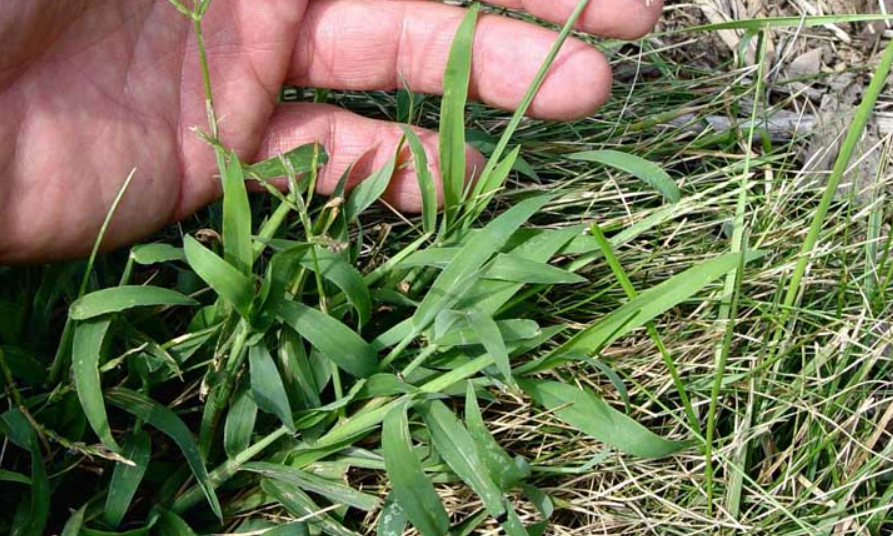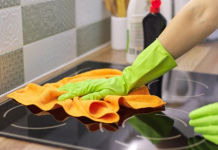Crabgrass, Digitaria anguinali, Digitaria ischaemum, Digitaria sanguinalis
A person who has a lawn with a lawn is always struggling with a certain enemy. A weed in the form of stubborn cheating that interferes with the smooth texture of the lawn. Until you fight it, it will gradually overpower you. The culprit is crabgrass, a group of weeds belonging to the Digitaria species. The most common form of crabgrass in North America is the large crabgrass (Crabgrass Digitaria anguinali).
Crabgrass (Crabgrass killer) is a group of weeds belonging to the species Digitaria . The most common forms of problem crabgrass in North America are Large Crabgrass (Crabgrass Digitaria sanguinalis ) and Smooth Crabgrass (Digitaria ischaemum ). They are active annual weeds that can suppress rainfall and severely deplete lawns. This explains why they can associate us with neglected lawns. However, even well-maintained lawns sometimes have grass problems in dry weather or especially in extreme weather.
Homeowners across North America struggle with crabgrass year after year, and it’s a whole industry of choosing the best chemical or lawn care product to eliminate or control crabgrass.
Categories of crabgrass killers

Crabgrass control methods fall into several categories and require an individual approach.
- Organic, non-chemical treatments
- Selective chemical herbicides
- Non-selective chemical herbicides
- Preventive (pre-emergent) treatments
In addition, weed control is sometimes not just about killing weeds, it establishes methods for maintaining a healthy lawn that prevent weed growth. These methods may include:
- Lawn planting.
- Proper watering.
- Proper fertilization.
- Regular cleaning and aeration of the core
Let’s take a look at the best ways and products to control weeds in each category.
Organic lawn, Organic, non-chemical treatments
Crabgrass is an annual weed that is difficult to control in sustainable lawns. This is because it produces thousands of seeds that easily germinate and root in bare or thin soil in some lawns. While chemical treatments are the preferred method for most homeowners, there are also ways to control crabgrass without using chemicals.
Physical removal. It may seem impossible, but weeds can be pulled with your hands. Especially if the weeds haven’t fully taken over the lawn yet. The best way to do this is to water the area around the bed to release the weed roots. Then press the weeds to the ground and pull them until they are free. This is best done early in the season before the weeds sprout. Never put the Guevara plant in garden compost, as the seeds will survive and spread through the surrounding landscape next time.

Corn gluten. Just a few years ago, using corn gluten meal for weed prevention was experimental, but now it’s an organic way to control weeds. Corn gluten is a byproduct of the corn starch production process and when applied to a lawn not only prevents weed seeds from germinating, it also provides useful nitrogen to the lawn. But corn gluten can prevent germination. This means you can prevent germination by adding just-picked seeds. You can do this by adding corn gluten. After that, all the new grass seeds sprouted and began to grow vigorously.
Selective herbicides, selective chemical herbicides

Selective herbicides target certain weeds or a certain category of weeds, while other plants are not affected. The most common weed killers can be considered selective because they act on broadleaf weeds while leaving narrowleaf plants, such as leafy grasses, untouched. However, crabgrass falls into the narrow-leaf plant category, so many universal “weed killers” are not at all effective against crabgrass – unless you specifically add selective biocide chemicals for crabgrass.
If you’re looking for a chemical herbicide designed to control crabgrass, look for a weed control pesticide or a specific bait herbicide containing one of the following chemicals, which, according to a recent university-sponsored survey of industry experts, are the most effective
- Hinclorac (Drive 75 DF herbicide)
- Dithiopyr (ecotoxicity – human health)
- DSMA (Mesa 30).
- Phenoxaprop-ethyl (Acclaim Extra)
Many common weed killers sold as crabgrass killers add one of these chemicals. Check the label to see what chemicals have been added to the grass. However, unless your lawn is infested with broadleaf weeds, it’s best to use the most selective herbicides you can buy.
Non-selective chemical herbicides
A non-selective herbicide is a chemical that kills all plants rather than selectively targeting one or more weeds. It may seem like suicide for your lawn, but if your lawn is badly damaged and full of weeds, sometimes the most effective solution is to completely destroy it and grow it again.
Herbicides come in two varieties: contact herbicides kill only the green tissue of the plants they come in contact with, while systemic herbicides go through those plants and completely kill both roots and plants.
According to a college survey, the best of these classes are:
Non-selective contact herbicides:
- Di Quat (award-winning)
- Pelargonic acid (sickle)
Non-selective systemic herbicides:
- Glyphosate (Roundup)
- Glufosinate – ammonium (definitive)
Herbicide, preventive (pre-emergent) treatment
First aid herbicides Eliminate chemicals before weeds germinate. They are designed to prevent new weed seeds from germinating. Recent university studies have included the following chemicals as effective agents for preplant treatment:
- Benefin (Lebanon Balan 2.5G).
- Benefin and trifluralin (prefabricated).
- Benslid (Bensumec).
- Ben Julie De + Oxa Dia John (goosegrass/crabgrass control)
- Dithiopyr (size).
- Oxadia John (Lone Star).
- Fendi Metallin (Pre-M, Pendulum, Halts)
- Prodiamine (barricade)
- Si Duron (Tupersan)
When to destroy crab grass
Product labels for destroying crabgrass contain recommendations based on a great deal of research, so follow these recommendations as often as possible. In general, follow these recommendations:
Timing is critical for pretreatment. The best time to treat is early, while the young plants are just beginning to grow. In most regions, this is May and early June.
Prior to application, water the lawn (if the soil is dry) and mow it.
Apply only if no rain is forecasted in the next 24 hours.
Wait at least 2 days after application to repeat the treatment.
Maintaining a healthy lawn

By far the best way to control grass is to maintain a healthy lawn where crabgrass cannot take root. A consistent lawn care program that includes the following steps will keep crabgrass from gaining an advantage.
- Lawn planting. Crabgrass tends to settle where there are bare, thin patches in the lawn. Planting the right varieties of lawn grass will help keep your lawn healthy and sound. For example, a lawn grass seed mix sold as “shade grass” contains species that root and thrive in shady areas. Alternatively, plant a high-traffic lawn seed mix to create a grassy lawn with great potential or gait.
- Water properly. Crabgrass is a hardy plant that does well in dry conditions. Proper lawn care will keep your lawn healthy and prevent crabgrass overgrowth.
- Appropriate fertilizer. A healthy lawn is a lawn that does not encounter crabgrass. Regular use of lawn fertilizer will help keep your lawn healthy.
- Regular treatment and aeration of the core. Grass needs to “breathe” to stay healthy. Removing clumps of cattle and aerating your lawn every two years will ensure that water, air and nutrients reach the root zone of your lawn.
When buying any substances, always read the instructions on the package carefully, so that you know how long after the treatment of the soil you can re-seed grass or plant other plants.






